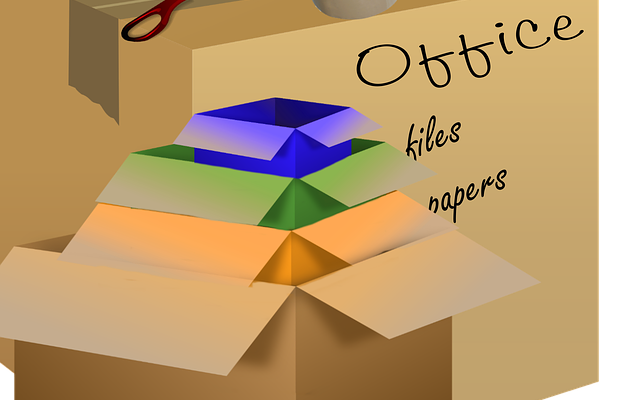Essential list of packing materials

Different kinds of objects require different materials and packaging methods to keep them safe.
Hiring good packers and movers companies takes care of this for you. Their services don’t just involve the physical transport of your belongings. These companies bring the appropriate packing materials and transport equipment, along with years of experience. They pack up your belongings efficiently and optimally and move them safely. Movguru can help you to find packers and movers services and get free, home-moving estimates from each.
At many times, people opt to do some of these home moving tasks themselves. It means packing your belongings yourself and hiring the movers companies only for transport of your household goods.
There are certain packing materials that are essential to any home moving process. These materials are inexpensive, not too difficult to get and protect your things well.
A list of these important packing materials:
1) Corrugated Cardboard Boxes
Home moving process is never complete without the most versatile packing material – corrugated cardboard boxes.
These come in a variety of shapes and sizes. The cardboard is a good protective material. It doesn’t damage the surface of your belongings. The boxes can be folded to save space when not in use. They are by far, the most practical packing material. They are also quite cheap and affordable. Sometimes, you can get such cardboard cartons for free by taking them from stores that are disposing them off after emptying the supply.
2) Specialty boxes
There are special boxes dedicated to a particular kind of item and come in a variety of shapes and sizes – wardrobe boxes, dish boxes, artwork boxes, mirror boxes, etc.
These are usually made from strong cardboard or some kinds of plastic. These are shaped in ways to carry specific delicate items without damaging them.
Professional moving boxes and cartons come in a variety of shapes and sizes—specifically suited to fit a variety of household goods.
3) Packing paper
Packing paper is usually the first layer of protection in the packing of delicate items. Usually, items made from glass, porcelain, ceramic and other brittle materials are wrapped in packing paper individually first before being packed into larger cartons or suitcases.
Packing paper is cheap, and is available as clean white or brown packing paper. It does not leave marks or stains on the surfaces of objects.
It can also be crumpled up and packed into empty spaces while packing to be used as padding.
4) Bubble wrap
Bubble wrap is your best friend while packing. With enough layers, this wrapping material can protect virtually anything, even the most damage-prone things. And it does so, without the fear and risk of scratch marks or stains on the object. You can use this for packing your TV, lamps, pictures, frames, showpieces, idols, crockeries and other delicate items.
There are different grades of bubble wrap available in the market with different sizes of bubbles and thickness of the sheets.
5) Plastic wrap
This is the stretchy plastic wrap that we are all familiar with. Also known as “stretch wrap” or “cling wrap”, this packing material is highly stretchable.
It is used to wrap around perishables such as food and drinks, and also keeps the containers tightly closed so that they don’t spill. It is used to wrap around furniture with drawers and doors to it so that they do not open.
Plastic wrap also acts in an air-tight manner to keep moisture, dirt and dust outside. Hence, it is very useful in wrapping up wooden furniture.
6) Packing tape
Often an overlooked packing item, packing tape also serves an important purpose. Closing up boxes that have been packed is only one of its uses. The main use of packing tape is as a reinforcing agent. Layers of packing tape are added below and around boxes to make them sturdier. This makes the difference between successful packing and packing failure.
Don’t cheap out on the kind of tape you use to shut and reinforce your boxes and other packing. Lower quality tapes have low strength and low adhesiveness. They come off easily and expose the things inside the box to moisture, dirt and dust. Spending on better quality tape will save you from a lot of unnecessary trouble.
7) A form of labeling
Labeling your boxes is a very under-appreciated activity. It seems unnecessary at the point of moving out. But the moment you reach your new home and need your toothbrush, soap and a fresh set of clothes to wash up and start unpacking, you will wish you’d labeled the boxes so you would know exactly where to look for to find these things immediately. Having labeled boxes saves you a lot of time and unnecessary effort input while unpacking.
There are many different ways of labeling your cartons and luggage. There are index-based labeling stickers available in the market. You can use plain white paper sheets and tape them onto the boxes and write out the contents of the boxes on the paper. Or you could use black marker pens to write directly on the boxes.
These are the simple essential materials required for packing your belongings when relocating homes.
There are many different types of packing materials and casings available online and in stores that are dedicated to various types of objects. But this list of 7 packing materials suffices as the basic for all kinds of furniture and objects.
Conclusion:
Home moving involves a lot of research. Despite hiring reliable packers and movers for the job, you have to get yourself involved in it.










